Low-E Windows and Combustion
I’ve read a couple of articles that suggest low-e windows can cause fires. It sounds like the low-e coating (or a film, the articles weren’t clear) is capable of reflecting and focusing sunlight in a way that can cause materials outside the house to combust. Does anyone have an explanation for what is going on with these windows?
GBA Detail Library
A collection of one thousand construction details organized by climate and house part



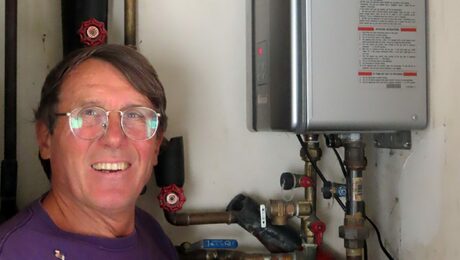
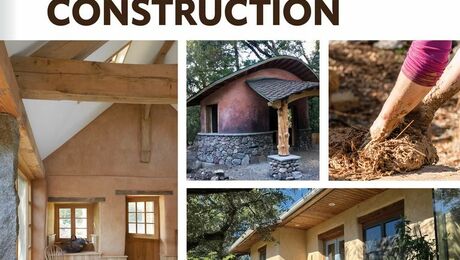
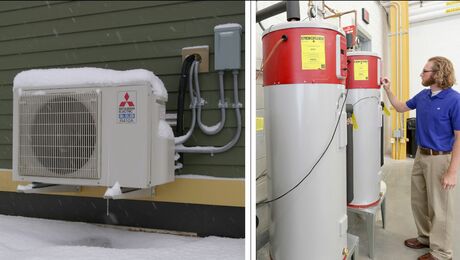
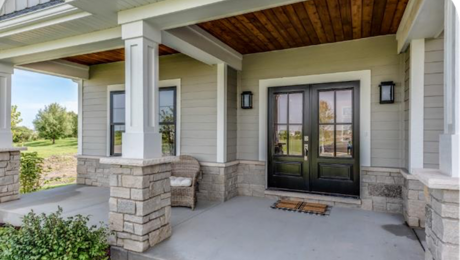
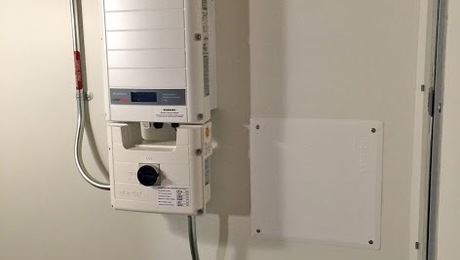

Replies
The reflective coating can reflect a focused beam of light and melt neighbors siding when the sun is in a certain position, I have inspected this twice. If it can distort the vinyl like a gas grille can I dont see why it couldnt start a fire if something combustible happened to be at that particular location.
Both were very localized, a couple feet wide over one, one and a half panels of vinyl siding, but completely destroyed the siding.
Evidently negative pressure causes a slight inward bow to the reflective surface which creates a focusing effect. An external screen or window tint film can fix it.
Not clear is if window manufacturers could do anything to prevent this inward bowing (higher pressure or pressure relief?).
Thanks, guys.
Your question got me to Google “low-e windows fire” I did not think I would find any reports of fires.
I did find one report with security video of it starting just off screen. The thing that surprised me the most is, the fire seems to have started in the shady spot, I assume the melted siding happened when the reflection landed in a spot with full sun. Part of me wants to know if any children or smokers were near that spot before the fire. http://www.wral.com/energy-efficient-windows-blamed-for-starting-fires/16558762/
I have not seen any measured temperatures over 200°F from a reflection. I think you would have a hard time starting a fire since grass burns at over 500°F https://www.fs.fed.us/t-d/programs/fire/spark/html/74511201/74511201.html
I suspect that even your vinyl siding is safe if all your windows have full screens as the screen will absorb sum of the light
Walta
Basic cold-climate low-e coatings reflect thermal IR (longwave IR), not sunlight. Hot climate coatings are designed to additionally block solar IR and sometimes some of the visible sunlight. They can do that either by reflecting or absorbing it. It's when they reflect it that the problem can arise--if the surface is also concave. The type that reflects solar IR is pretty common in the US; I'm not sure how common the defect of a concave surface is.
Yes, not only do the basic coatings only reflect thermal IR, but they are applied on the interior surfaces and don't change the fact that the exterior surface absorbs thermal IR.
Some more insight here ... https://www.nahb.org/en/research/legal-issues/~/media/3B95CC62548F4553ADD3919EB246A934.ashx
I expect that pane thickness makes a big difference in the ability to remain flat.
If carefully focused light from a 3" magnifying glass can cause temperatures hot enough to ignite things (it can), I have no problem believing that loosely focused light from a concave windows surface literally thousands of square inches in area could do the same. It would all depend on how flammable the material is, how close to the focal point of the window it is, and just how well focused the light is.
The row of houses behind us in our townhouse subdivision is about 60-70' away. The back of our row faces West-Southwest and at this time of year there are some fairly well focused "star" shapes on those houses from light reflected off our windows. After 14 years and not seeing any siding damage I doubt there's a risk here, but who's to say there wouldn't be if they were a little closer?
We have many umbrellas on our deck to offer shade as our back yard gets HOT in the summer. If you're under the shade of an umbrella but sitting in the direct path of sunlight reflected from a window it's still very uncomfortable. These are builder grade double pane windows from 2004 so I doubt they reflect as much energy as some higher efficiency types do, yet they still reflect considerable heat.
Using a FLIR IR camera you can clearly see the IR signature of room objects reflected in the window glass, seemingly more so than visible reflections, so even basic float glass must reflect considerable amounts of IR. In fact, the lenses for IR cameras are made of special materials to allow IR to pass.
Some things are possible in theory but never happen in the real world.
There are tens of thousands of low E windows in the field and I found 1 suspected fire with less than convincing evidence.
Any supporters of this theory I challenge you can measure any outdoor light window reflection over 300°F to any surface.
Walta
Any bowing of the glass pane due to vacuum has got to be very slight. The slighter the bowing, the farther away the focused reflection would be. There's this curved glass building in London that has caused some mayhem by focusing sunlight and melting/burning things, and look how big and curved it is: https://en.wikipedia.org/wiki/20_Fenchurch_Street#Solar_glare_problem
Given that an entire curved glass skyscraper has only caused modest damage, I wouldn't expect much from ostensibly flat panes of glass on normal buildings.
I've been active in online builders' groups for a long time and at least once or twice each year somebody posts a photo asking "what caused this?" The distinctive arc shape of solar damage makes it easy to diagnose the likely cause.
A 24" wide pane of glass deflecting 1/4" has a radius of 24', so it's not far-fetched to see how it could be a problem. I've seen several windows that had failed seals or for some reason collapse until the panes are touching at the center, including one just a few weeks ago.
My neighbor's Jeld-Wen brand LOW-E windows caused a serious fire and several reignites on my property in January and February 2017. Between investigating firefighters and forestry department rangers and extensive surveillance video of the fire in progress, there was no question whatsoever of the windows being the cause. The US CPSC also sent a federal agent to investigate. Subsequent temperature readings of the reflective glare taken by the Fire Marshal reached 362 degrees F. Many other fires (and other melting damage incidents) here locally and across North Carolina. In fact, state building code was changed in 2016 in response to these incidents. You can see the video (and hear from another NC fire victim too) on this link. http://www.wral.com/energy-efficient-windows-blamed-for-starting-fires/16558762/
Nancy you linked to the same article I did earlier in this thread. In the video the fire starts off screen in what appears to be a shady spot. If this phenomenon was going to accrue one would think it would be someplace where the reflection landed on a sunny location.
If the first fire burned all the fuel how is it possible for a fire to start in the same spot the next day?
If I am not mistaken the code changes were reversed fairly quickly.
How many investigations and no published reports that I can find on Google?
If a grass fire can start from a source less than 500°please post a link.
Walta
Contact me through LinkedIn and I will be glad to furnish you with additional evidence that cannot be uploaded here such as detailed tell-tale photography of "death rays" moving across my property and settling on embers where fire originated (sturdy built, wooden dog house for stray cat) before reaching pine needles, temperature readings from investigating fire marshal (and my own), and other details. Common sense also came into play when standing in my yard beneath "death rays". Your questions - 1) When fire first began in mid-afternoon, location was sunny. Fire smoldered for at least 30 -45 minutes on dog house before reaching pine needles and ground cover below. Had it not been for a brick exterior, landscaping crew passing by and my barking puppy, home would have been fully ablaze with me soundly asleep inside long before firefighters arrived. 2) The death ray was so-o-o hot that remaining embers reignited every other day despite being saturated with water by fire department each time (and me every morning as a precaution). As noted on fire report, embers began smoking again before firefighters even left the property and fireman's hand was burnt after only 30 seconds in the "death ray" beam. Was ultimately forced to replace backyard pine needles with river rock and brick chips at great expense. 3) The NC Bldg. Code Council first established committee in 2010 to investigate rash of LOW-E fires (and other damage) in Apex leading to first attempt to change code in 2014. Quickly overturned due to industry pressure but reinstated in 1/2016. Also, WRAL-TV first began their investigation of issue back in 2013. (Please note - I was thanked by numerous reputable contractors, firefighters and even local code officials when bringing my concerns to the Council last year. They too are eager for resolution to this dangerous safety hazard.) 4) I located several reports to US CPSC about such fires and can cite many references to such reports in a variety of articles from various "official" investigating parties since 2010. While many if not most reports have somehow disappeared from CPSC product recall/repair/report database, I thankfully kept copies of some. 5) Not sure what you want but I have official temperature readings documented by fire marshal at 347F and 362F as well as a home video of meat thermometer instantly shooting to maximum temperature of 200 degrees F when placed under "death ray" beam. Another highly regarded engineer has recorded even higher temperature readings (502F) during his scientifically sound experiments of this phenomenon. Hope this helps. Also, I hope the WRAL video shows how any fire on a windy day quickly becomes a neighborhood problem.
Also, regarding cigarettes and/or smoking - I had same thoughts when initially told fire was due to arson but 1) review of surveillance video in days & morning leading up to fire clearly eliminated them from consideration and 2) firefighters actually explained that the occurrence of cigarette related fires has become rare since regulation mandating fire safe cigarettes (via speed bumps in cigarette paper) and other measure adopted by tobacco industry in response to that problem. (Which raises the question of why window manufacturers are not held to same standards as in developing "fire safe" LOW-E windows?!)
Walter, the geometry of this issue will often mean the affected areas are in the shade.
This is not far from what I see looking at the houses behind me at this time of year, though no melted siding issues likely because the distance is not close enough to the focal point of the window glass.
One of many tell-tale photos. Two of these going across side of house in late afternoon. Potential for damage to materials beneath brick exterior, wooden window frames and interior shutters. Maybe parked car too???
Not to belabor the issue but a fully ablaze fire on a windy day quickly becomes everyone's problem.
I will admit I am often a skeptic. That is a powerful image I had not seen before.
Thanks for changing my mind.
Walta
Just trying to generate awareness one person at a time:).
I don't think its correct to characterize this as due to Low-E windows, but it must be related to windows that are very reflective or with a low solar heat gain coefficient (SHGC). They often go together, but don't have to. How big was the offending window? How much was it warping? What were the specs on this window?
I’ve found no dispute among relevant authorities that LOW-E glass is problematic in certain situations. (Hence the change to NC building code in 2016 allowing for clear glass in new construction when LOW-E is known to be problematic. It was implemented to protect contractors from liability when adhering to state code.)
The only question is “what to do about it?” This component is more complicated because of energy efficiency mandates and the numerous parties involved – federal/state/local governments, construction & glass industries, home improvement retailers, insurance companies, etc., and all of their respective attorneys.
Per your question – I am dealing with uncooperative neighbors and only have privy to the manufacturer being Jeld-Wen and glass being LOW-E. A large ~50”x50” window caused the fires but at least one other window (~50x25”) was damaging two shrubberies in an adjacent area. An energy consultant who attempted to intervene with the manufacturer on my behalf, claimed all the windows in the home are potentially problematic under the right environmental conditions due to being concave. I have since spent $00,000 installing fencing enhancements to block the glare and replacing pine needles with non-flammable river rock & brick chips to deter further fires.
If you want specs for a dangerous window, here you go, this is from my neighbor's window that melted my siding and heated my house to over 300 degrees:
In answer to this: If the first fire burned all the fuel how is it possible for a fire to start in the same spot the next day?
There is a house that is being investigated after the neighbor's low-e windows had caused a fire on the siding. When the investigators went back several days after the fire, the siding was smoldering again thanks to the windows. Yes, they can start multiple fires.
Jeanne, thanks for the window specs. That is a low SHCG window, consistent with what Brad (comment 21) and I (comment 5) said. For people wanting to understand low-e coatings in depth, I recommend the Florida Solar Energy Center's "industry guide":
http://www.fsec.ucf.edu/en/consumer/buildings/basics/windows/guides/IndustryGuide.pdf
I'm attaching a picture from that that shows the two types of hot climate low SHGC windows. The first type does not reflect any more solar energy than an ordinary window. The second type reflects vastly more solar energy than an ordinary window and is the origin of this type of fire. I hadn't thought of this before, but the last version, all the way at the right, would be a problem if the pressure between the panes was too high, bowing them outward. But the 3rd version, second from the right, is, as I understand it, more typical.
Note that cold-climate high SHGC low-e windows don't have this problem any more than ordinary windows without low-e coatings.
Michael noted a while back seeing collapsed windows, and attributed it to failed seals. That sounds strange at first, because a complete failed seal would lead to equal pressure inside and out. But typical sealant materials are more permeable to argon than they are to air. So the argon can leak out faster than nitrogen and other components of air leak in to replace it. This article has much more detail on that:
http://www.vitroglazings.com/VitroGlazings/media/sitedocuments/TDs/70_TD126F.pdf
As a historical note, the first in-depth studies of gas permeability of rubber for different gasses were motivated by development of early lighter-than-air vehicles. But they burst into flames even without concave windows focusing solar rays on them.
Thank you for posting that. So basically, my neighbors could have gotten the energy efficiency of low-e windows without destroying my house if they had just chosen a different coating?
Steve,
This Q&A thread got up to 26 comments while I was on vacation, without anyone noting that GBA had an article on the topic that was published in 2010. Here is the link to the article: "Window Reflections Can Melt Vinyl Siding."
In that article, I wrote:
"Perhaps the most alarming cases of glass reflectance are those involving the ignition of cedar wall shingles. According to the U.S. Consumer Product Safety Commission, reflections from sunroom roofs have caused four house fires. The commission has issued an alert that states, ‘Sunlight reflecting off of certain sunroom roof glass and skylights onto adjacent cedar shingles or cedar shakes could pose a fire hazard. … Cardinal IG and Four Seasons [a manufacturer of sunroom components] are aware of four fires that could be attributed to this scenario. There are no reported injuries. The damage ranged from minor damage to shingles and underlying sheathing to incidents that caused some structural damage to roofs and walls. … Cardinal IG and Four Seasons working together will repair the roof glass through installation of a capillary tube.’
"When I contacted Cardinal representative Bob Spindler to learn more about the recall, he was tight-lipped. ‘Four Seasons is a customer of ours, and what happened in that case is between Four Seasons and Cardinal,’ said Spindler. ‘There are some things that shouldn’t be published. There are certain things that from a political standpoint one can’t comment on.’ ”
The report regarding my house is now on the Consumer Product Safety Commission website, saferproducts.gov: https://www.saferproducts.gov/ViewIncident/1736003
The magnifying effect has happened to our house. We three very large (6ftx6ft) low-E windows on the south east side of our house. Not long after we moved in (house was new), we noticed a large area of siding had melted. The area was on the same side of the windows, below (them at about 5 o'clock ) and on a section of exterior wall that came out from the house about 8 feet. We had the siding replaced, and covered it with some fiberglass awning material (since it was above some stairs leading to the basement. Here is a picture of an electrical PVC pipe that also is below those windows, and around 5 o'clock. The heat was so strong it literally scorched the pipe. The other picture shows the side of the house with the wall that comes out from it and where the affected areas were.
Another similar issue, is when the sun reflects off of windows behind us (these are houses by the same builder, with the same Low-E windows) we are on a steep hill, so they are about 12-15 feet taller. If we are in the direction of the "sun beam" from that reflection, we can't stand in it.. as it is way too hot.
I live in Portland, Oregon. We have brown tracks across our lawn and some brown, dead leaves on a nearby shrub. It took a few years of this to figure out it was due to two 2nd floor windows focusing the sun. At the right time placing ones hand in the focused spot is too painful to keep it there for more than 30 seconds.
I contacted Milgard, the window manufacturer, for advice on what could be done. I was hoping for some engineering suggestions. All I got was a what I surmise is a lawyer's response--nothing can be done, except replace the windows at your expense. "At your expense" was mentioned at least twice.
These are casement windows with interior insect screens. I expect fitting exterior insect screens or something equivalent dispersing the light would solve the problem.
I do not expect that my situation rises to the fire-creation level, but it is an annoyance.
-Denis
The answer to your question is yes! Low e glass has little or no energy value. Yes I said it right! I have 23 yrs in the glass industry replacing bad units due to coating breakdown. And now finally all the truth is about to come out on this over rated product. Use high quality tint with clear unit, will last far longer then manufactured low e. Low e glass can not regulate heat reflection, I.r spectrum is crap and heat obsorbtion is very low where savings is not where it should be vs Madico tint. You have other factors such has building facing toward the sun or away etc.. What I have found first hand was interior damage to furniture flooring. Low e glass could not filter ultra violet rays creating circle like spots on expensive furnishing. Other things I saw was melted siding burnt landscaping and decks. If you dont believe me Google the problems low e glass is having on new or remodeled homes!
LowE windows certainly do reduce heat loss or gain. This is easily measureable. The coatings work by selectively reflecting wavelengths of light outside of the visible range, which includes much of the infrared spectrum where a lot of heat energy is. The result is a LowE window is going to reflect more energy than a "regular" window, but it's not amplifying anything -- it's just a reflection. The same thing can happen with a plain plate glass window if the angles are right -- in theory, when the angles are right, you actually get a perfect reflection.
Regarding ultraviolet transmission, common soda lime glass blocks most UV, "most" typically being 60-90% or so. The LowE coating isn't the issue there -- the glass itself is doing the work.
Bill
Thought you sounded like you knew about this problem. I just noticed that the inside wood/stained frame around our sliding glass door was charred through on the bottom portion of the frame. I remember smelling what seemed like burning wood several different times when walking by our dining area but we live in the woods so didn't try to sniff out the source. Now here I find this charred door frame and no wiring or reason for it to be charred other than by sun reflection. This is double paned, probably low E and the only sliding glass door not original to the house which was built in 2003. Think this sliding door was installed in 2007 or so. Not sure if this door frame can be fixed or if it needs to be replaced but it is scary to think the sun made it hot enough off our deck to char the inside! There are no wires or anything that could have caused this. The outside of the door frame is metal. Your thoughts would be appreciated.
I don’t see any way a reflection off a window would actually burn wood. The closer things are, the less focused the reflection will be, and less focused means lower energy density which means lower temperatures. It IS possible for concentrated sunlight to burn things though, but I’d suspect something other than the windows here. Maybe a glass bowl on a nearby table? Curved things can act like lenses and concentrate light.
Do you have any pictures you can post of the damaged areas?
Bill
This is an interesting puzzle. Any further details would help. What climate are you in? How big is the spot that's charred? Pictures would help.
From what I see when looking at multi pain windows are never flat changes in the atmospheric pressure and temperature are always changing the curve in the glass this bends the reflection if something or someone happen to be the correct distance from the window give the current curve in the glass the reflected light will be focused much like a magnifying glass does.
Walta
With the relatively small change you get, the focal point will be pretty far away. This would only happen with increases in atmospheric pressure, if the atmospheric pressure is low relative to the pressure within a multipane window, the curvature of the glass will spread the reflection out, decreasing the energy density -- the opposite of focusing. This is a property of multipane windows in general though, it's not specific to LowE window coatings. The only thing a LowE window coating is going to do is reflect a larger band of wavelengths of light compared to a plain glass window, so the resulting reflection will contain more energy as a precentage of the total energy coming down from the sun. The reflection will still have less total energy than the sunlight striking the window though, since some of the energy passes through in the form of visible light, even with the most aggressive of the lowE coatings.
All any optical coating, like any of the LowE coatings, on glass does is act as a filter. These are known as "thin film filters". They work by selectively reflecting or transmitting (passing through) light based on wavelength. It's not magic or nefarious, it's just physics at work. The exact same technology, on a much more refined level, is used to build the filters on DWDM fiber optic network systems that allow different data streams to be passed down the fiber on different wavelengths of light. If you've ever wondered how Internet bandwidth prices have dropped so drastically over the past two decades, the biggest drivers are DWDM optical transport network technologies -- specifically the filters and the amplifiers (EDFAs and, to a lesser extent, RAMAN amplifiers especially). This is cool stuff, and the other half of my work from the power systems and energy management stuff I work with.
Bill
The way and amount the glass bows is dependent upon the pressure differential from inside the sealed unit to the outside. The manufacture has an economic incentive to use less of the expensive fill gas so below atmospheric pressure filling is a possibility. Even when the glass happens to be bowed out you will get a convex reflection from the inside pane back to the outdoors.
Can we agree low E coatings do reflect more energy making a bad situation worse should the phenomenon accrue?
Walta
>"Can we agree low E coatings do reflect more energy making a bad situation worse should the phenomenon accrue?"
Yes, certainly. The coatings do result in more reflected energy, since that's how they work -- the lower solar gain numbers are due to more of the energy being reflected by the coating instead of transmitted through to the interior of the home.
My main thing I've been trying to point out is that there is nothing magical about the coatings, the incoming sunlight still has more energy than the reflections. I see some pseudoscience stuff getting mixed in with LowE coatings and that's not good for anyone.
Bill
So what’s the solution? Don’t buy Low E windows? Is there anything you can do to make Low E windows safer if you already have them?
The solution is don't worry about it, it's not really a problem. There are a few "melted siding" reports, but a lot of those may well have happened with any type of window. In the vast, vast majority of installations, LowE windows will save you money on energy costs and will cause absolutely no problems at all. They aren't dangerous at all. Worrying about LowE window reflections isn't any different from worrying about shiny things reflecting light at you, or regular ol' mirrors being "dangerous".
If you stand outside in the sun, more solar energy is hitting you than will be reflected from a window in any case. The "it focuses the light" issue happens with glass in general, and isn't really anything to worry about, either. You're extremely unlikely to ever see any negative effects in the real world.
Bill
To add to what Bill said, also note that there are multi-pane windows that are not inert gas filled and are instead air-filled with a capillary tube used to equalize pressure between the inside and outside. These would be pretty resistant to glass flexing either concave or convex, because all but very short-term pressure fluctuations would be equalized, and are available with or without low-E coatings on the glass. Also, I imagine an exterior insect screen could help diffuse light if there was an issue with a concave window surface focusing it on something.
Has anyone experienced charring of the inside of sliding glass door frame from sun reflection? This has happened to us. Scary to think it might have gotten hot enough to ignite the cellular blind that is often down due to sun load. None of our other sliding glass doors off the deck have done this and they all face the same direction and get morning to early afternoon sun. We live in South Carolina.
I responded to you up in my post #41, above.
Bill
In less than a month, the reflection from a South facing window did this damage to my new hot tub. I am not certain whether the window has a low-e coating.
Low-E doesn't make this happen, the reflection does. If things are oriented the right way, you can have issues. In fact, if the angle is just right, the outside surface of the glass is a perfect (no loss) optical mirror, and the light all reflects off before it even gets through the first glass pane to the first Low-E coating.
If it's your window, try putting some slats up to limit off-angle reflections.
Bill
Wow that looks to be a very intense focal point.
Is the window in question yours or your neighbors?
Walta